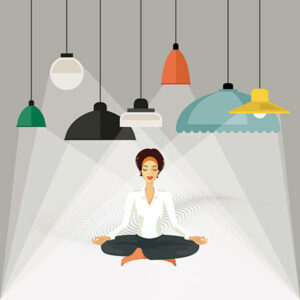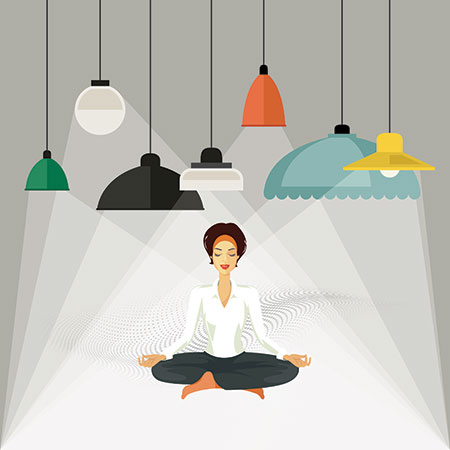By Willard Warren
 Mechanical devices are torture-tested to the breaking point to avoid massive failures in the field and expensive recalls, and yet disasters slip through—i.e.: seat belts, ignition switches and overheated lamps in street lighting luminaires. However, it’s inhumane to similarly test human beings, so, sadly, we learn after long usage that some horrors like smoking, DDT, carbon emissions and maybe even climate change, can be dangerous for our species. We’re also told that daily eyestrain has no cumulative effect, and that we recover after a night’s sleep. However, night workers can be physically harmed by the continued disruption of their circadian rhythms and while we hope that long exposure to self-illuminated monitor screens is benign, only time will tell.
Mechanical devices are torture-tested to the breaking point to avoid massive failures in the field and expensive recalls, and yet disasters slip through—i.e.: seat belts, ignition switches and overheated lamps in street lighting luminaires. However, it’s inhumane to similarly test human beings, so, sadly, we learn after long usage that some horrors like smoking, DDT, carbon emissions and maybe even climate change, can be dangerous for our species. We’re also told that daily eyestrain has no cumulative effect, and that we recover after a night’s sleep. However, night workers can be physically harmed by the continued disruption of their circadian rhythms and while we hope that long exposure to self-illuminated monitor screens is benign, only time will tell.
ELSEWHERE, FOR INTERESTING REPORTS related to the potential long-term relationship between quality of light and health have been issued. The first, titled “The Impact of Lighting and Views on the Workplace of the Future,” was written by Kevin Van Den Wymelenberg and his associates at the University of Oregon’s Energy Studies in Buildings Lab, who did an exhaustive study of 88 peer-reviewed, published papers written by lighting experts on the “significant energy benefits associated with daylighting and personal lighting control.” They extracted some very astute observations, such as: “While increased daylight exposure can yield significant positive effects, care must be taken to mitigate the potential for glare,” and “Attempts to improve visual comfort could have a negative overall effect if they adversely impact thermal and acoustic comfort” because our human senses are interdependent.
The researchers recommend a complementary approach using a combination of automated solar and electric lighting control systems along with personal controls…“to help modulate illumination, glare, solar gain, access to view and circadian stimulus, to produce individualized, comfortable, and healthy visual environments.”
The second was one of three articles published in the IES’s online Forum for Illumination Research, Engineering, and Science (FIRES). In “In Defense of Lighting Quality,” Darcie Chinnis, senior associate at HLB Lighting Design, wrote: “Lighting is often described as a balance of engineering and art—where creative aspirations are balanced with functional needs and ultimately often limited by energy code requirements. All too often, quality of lighting is seen as an option rather than a requirement. As lighting products continue to improve, we can make significant reductions to the energy required to meet our quantity requirements,” but, “the quality of the lighting should hold equal stature to the engineering effort. Are we as an industry ready to argue why watts per sq ft is not the only criterion? Are we ready to defend that position with research and data that support an economic case for lighting quality?”
In another FIRES article, “The Elusive Discomfort Glare Metric,” author Naomi J. Miller of the Pacific Northwest National Laboratory cited six factors in the Glare Metrics calculation that make it “elusive”—(1) The luminance of the glare source from the vantage point of the viewer. “One must make assumptions about whether the luminaire aperture, the flashed reflector area, or the summed area of the LED sources constitutes the luminous area,” Miller writes; (2) The size, in solid angle, of the glare source from the vantage point of the viewer; (3) The background luminance of the area beyond the glare source; (4) The adaptation luminance of the viewer; (5) The angular deviation of the glare source relative to the viewer’s line of sight; and (6) The accumulated glare when there’s a number of glare sources within the field of view. Miller concluded that the issues posed are not easily solved, however, “We’re hoping we’re on the right track to get a practical calculation method for luminous area values used in glare metrics that can be more predictive of discomfort glare.”
The third FIRES article was a companion piece to Miller’s paper entitled “Discomfort Glare Metrics: Elusive, But Not Illusive” by John D. Bullough of the Lighting Research Center at RPI. Bullough indicated that there are measures that can be taken to address Miller’s quest for a less elusive discomfort glare metric, but be aware: “Precise predictions of discomfort glare will never be possible because sensations of discomfort are also impacted by psychological factors such as aesthetics; beautiful glare sources are less ‘glaring’ than ugly ones,” and visual performance is difficult when tasks have low contrast—and oncoming headlights are more “glaring” on unfamiliar roads than on the familiar commute home. “Still,” Bullough writes, “such a metric or metrics will be useful for relative comparisons between and among different configurations.”
THIS IS NOT AN ACADEMIC ISSUE. The Big Data collectors want to remotely monitor all environmental data with sensors embedded in luminaires, while Big Brother wants to remotely control those data, but that’s counter to personal control, and won’t work. Our European colleagues are using less general lighting and more occupant-controlled task lighting in workspaces. Furthermore, while Big Brother has to follow energy codes, it does not have any concern for the qualitative recommendations on glare control by the IES, and if it controls the choice and location of the luminaires, the public will suffer and so will the IES. A glare metric is necessary to reduce glare, improve vision and leave the quality of the lighting systems in the hands of lighting professionals while still conserving energy.


